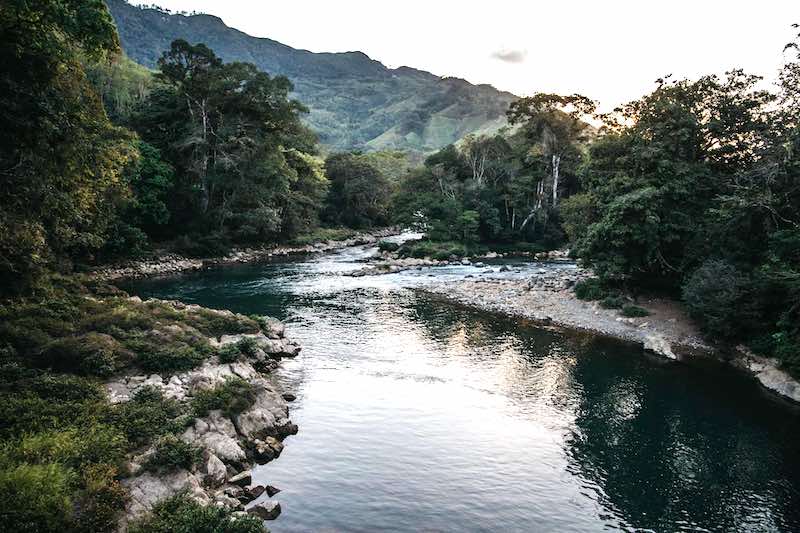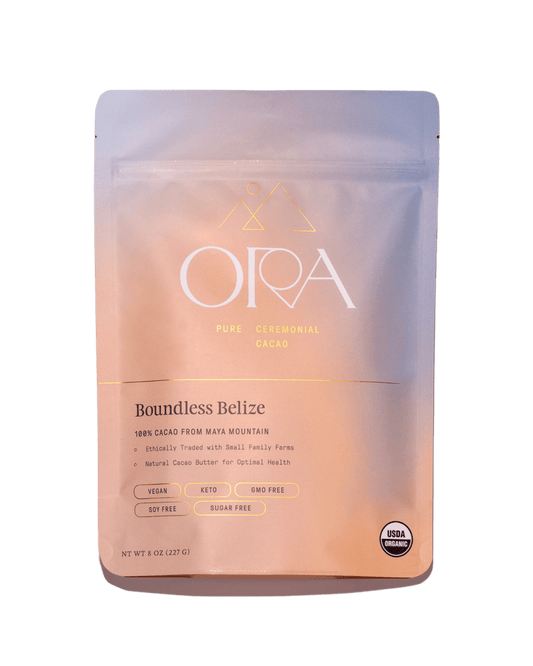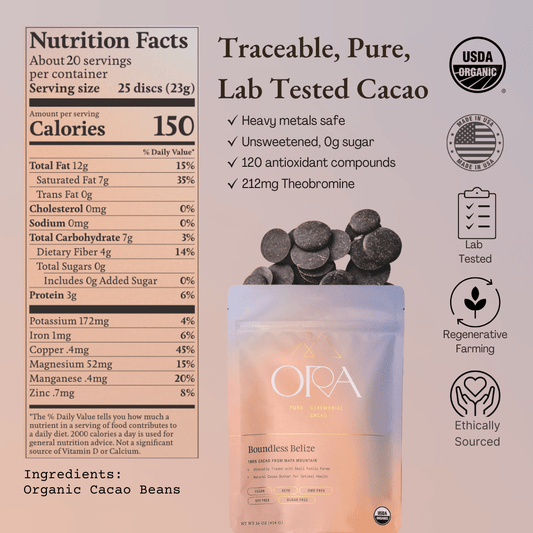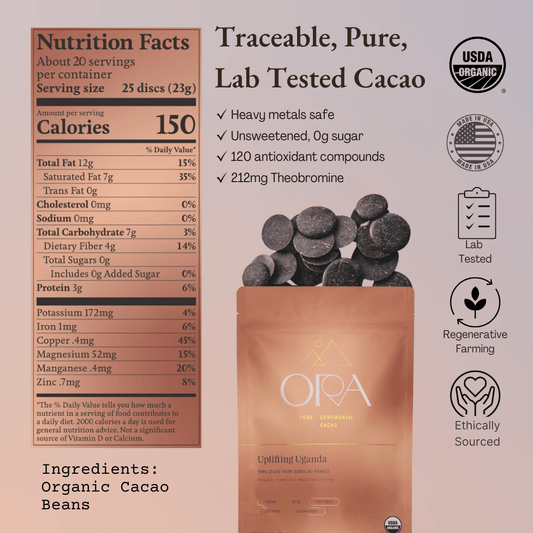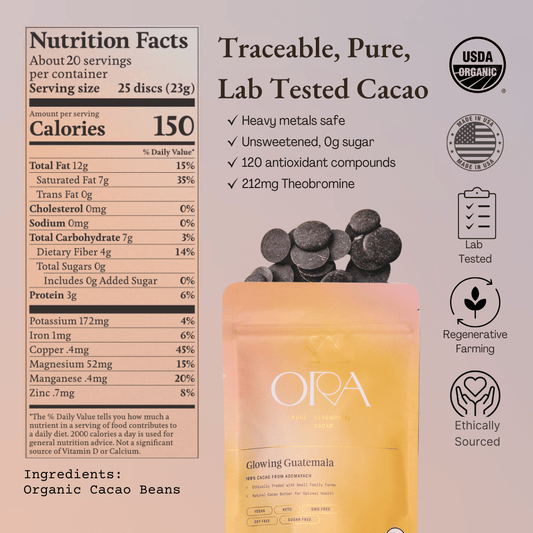What You Need to Know About Cacao Genetics
(approximately a 10 minute read)
If you are here, you've most likely heard somewhere else that "criollo" cacao is the best cacao out there. To be honest, we believe that is a misinformed, elitist, and myopic opinion not grounded in factual information.
That's why we collaborated with one of the world's leading cacao geneticists to get you the real story about cacao genetics.
It can be hard to find good information on the internet, and especially with nuanced topics like genetics, the truth is often oversimplified and distorted to serve marketing purposes. That's why we're hear to help.
We believe cacao genetics is an important and fascinating topic. We're going to cut right through the misinformation you've most likely heard, and share with you some truly insider info about cacao genetics.
Navigate this article
To start, let's go on a cacao genetics deep dive .... with our cacao geneticist friend Dan. Here are the TOP FOUR things he taught us about cacao genetics.
When consumers of chocolate hear the word Criollo, what they are universally expecting is the ancient domestic Criollo that was grown by the Mayans and their forebears like the Olmec and Zaptoec. Yet ...
-
There are very few farms in the world today that even cultivate genetically pure Criollo
Criollo cacao never grew in the wild, but rather was widely cultivated and popularized in pre-Columbian Central America and Mexico from an ancestral wild population believed to have originated near the present-day border of Colombia and Ecuador. In South America, this type of cacao was only cultivated in the Northern parts of the continent in countries such as Trinidad, Venezuela, and limited regions in Colombia. Major cacao producing countries deeper in the continent such as Peru, Bolivia, and Brazil with native cacao strains have never cultivated these ancient domesticated types.
-
There are semantic problems with the word "criollo".
In Latin America, the word “criollo” in practice usually translates to “local”. Examples of this use can be seen in other food references, for example, to identify local varieties of potatoes or even chickens. As a result, farmers in much of South America will often refer to their local varieties of cacao as Criollo. In this context, use of this term is of course not wrong, however when used in marketing or sales to chocolate makers or consumers, it is misleading and creates even deeper confusion.
-
Cacao is very difficult to neatly classify. Currently, well over a dozen discrete populations of cacao are known to exist.
Most popular articles about cacao will mention three varieties: Criollo, Forastero, and Trinitario. This originally popularized three-tier classification system is inaccurate and has long since been replaced with a more complex classification system of distinct populations, but most of the public isn’t aware of this. Most importantly, these different populations are very diverse and offer a wide range of agricultural and flavor potential, with no single population being necessarily better than another.
-
Cacao trees with different genetic backgrounds cross pollinate all the time.
In the present day, with a few exceptions, the vast majority of cultivated cacao is not a “pure” cultivar or heirloom type as landraces and trees are largely planted from seed. After nearly one hundred years of open-pollinated hybridization between primarily Trinitario and Upper Amazon varieties, most cacao trees are a complex mix of at least 3-4 genetic groups, with each tree in a given field being a unique individual. What’s fascinating about this hybridization is that it means most fields have a lot of genetic diversity and as a result, the potential for a complex range of flavors.
A typical genetic profile of a cacao tree may actually have varying percentages of three or four different populations that is most easily visualized with a pie chart. Even this pie chart is an oversimplification, as it is an average of a representative random sample of 50 trees in a set of 5000, each one of which has a substantially unique genetic composition.
Figure 1: The hybrid genetic profile of the cacao we use from Belize, classified using primary strains.
If you want to get even more nuanced ...
Here's an introduction to the domesticated and wild populations of cacao.
Here's an introduction to the domesticated and wild populations of cacao.
There are domesticated varieties, including domesticated criollo, Ecuadorian Nacional, Brazilian and Amelonado to name a few. Trinitario is a hybrid between domesticated criollo and lower Amazon Forastero amelonado types that originated in the mid-1700s in Trinidad.
The wild populations in cacao fall into two major groups which are located in the lower and upper Amazon and Orinoco river basins. The Upper Amazon is the center of genetic diversity and the dozen or so populations native to these tributaries are as different from one another as they are to domestic Criollo. The Lower Amazon populations native to parts of Brazil and French Guiana have lower genetic diversity than the Upper Amazon and are the source of the Amelonado populations that made their way into cultivation in Bahia, Brazil and later into Central America and West Africa.
The presence of grafted trees also adds complexity that can't be ignored.
The presence of grafted trees also adds complexity that can't be ignored.
Despite the worldwide predominance of seed-grown cacao trees, the prevalence of grafting which started in the 1920s has been increasing, particularly in Latin America, but also in other regions. Grafted trees are typically of known ancestry and characteristics. Throughout Central and South America, there is a common set of grafted trees that are often termed “fino de aroma” or fine flavor cacao. This group of clones include a mix of classic Trinitario types and Trinitario/Upper Amazon hybrids that are grown together in a mixed field to produce a complex range of flavors while maintaining some genetic diversity and reducing risk by avoiding reliance on a single variety. There are also clones that were not selected for flavor or aroma, but rather for agronomic traits such as productivity and disease tolerance. Unfortunately, these varieties are often grown in mono-cropped plantations with high intensity management and inputs.
Let's not oversimplify things.
Cacao genetics is a complex topic that is not easily condensed into a sound byte. In fact if someone tells you "Criollo" cacao is the best, you now know they have NO IDEA what they are talking about.
If anything, the cacao genome is similarly complex to Homo sapiens. You can see that for multiple reasons, advocating one cacao strain as the best is just as horrifically erroneous as claiming a white person is better than a person of color. This genetic elitism is misinformed and manipulates the public for monetary benefit to stand out in a crowded and confusing market. If the events of 2020 in the U.S. have highlighted anything, it’s the need to move towards full inclusion and equal opportunity for people of all cultures and ancestries. Marketing genetic primacy in cacao needs to be recognized as perpetuating the same genetic reductionism and elitism that fuels harmful racism and as a missed opportunity to rally consumers behind important topics that would support a resilient supply of cacao.
At Ora Cacao, we work with small cacao farmers in six different countries to source our ceremonial cacao. We purchase from thousands of small cacao farmers and run our own factory.
Here is what we've learned in ten years as a cacao buyer and chocolate manufacturer.
Use local region of origin descriptors for cacao classification
Given the complexity of cacao tree genetics, an alternative proposal for public consumption that is gaining traction is to simply use local region of origin descriptors for cacao.
This approach abandons the unnecessary reductionist exercise of classifying cacao by genetic profile that is primarily useful for specialists, and instead encourages the public to celebrate cacao as a species capable of adapting uniquely to the region where it grows.
We believe there is far more meaning to derive from highlighting a place of origin’s unique culture and ecosystem than some obscure information about genetics that takes a degree in agronomy to properly understand.
The cacao from each region we srouce from has a unique and completely different hybrid genetic profile. NONE of those differences in genetics make one cacao region objectively better than another. So let's celebrate this diversity.
--> You'll find that the majority of people selling "criollo" cacao only sell cacao from one region, so they don't have this bigger picture perspective.
Hold marketers accountable. Demand traceability and proof for claims of pure Criollo cacao.
Cacao genetics is NOT like wine, where you might know that you like Bordeaux. There are differences chemically from different genetics but there are many other variables out there that are more important for flavor and energy.
We believe that cacao marketing with genetics is usually not malicious, but mostly just terribly misinformed. There have been some atrocious misadventures in industrial cacao growing, such as the development of cacao strains like CCN-51, which are just optimized for productivity at the expense of everything else, such as flavor and spirit.
It’s quite likely someone marketing cacao genetics is attempting to differentiate themselves from these harmful practices. But as should be clear by now, cacao genetics are complex, and marketers need to take responsibility, as quite a lot of damage can result from ignoring the complexity of nature by pushing a buzzword in favor of monetary gain.
--> We taste, analyze, and discuss cacao daily. We've never witnessed anyone reliably identify "criollo" or any other cacao genetic by taste or energy. It's simply not something that has a big impact on the final product in the way people claim it does.
Genetic are not the most important factor for flavor or energy.
As long as it isn’t an industrial strain optimized for output, we view genetics as secondary. Many other steps in cacao growing and processing impact the flavor and potency to an equal or greater degree. This include factors like regional soils and weather patterns, the local ecosystem, the fermentation (arguably the most important), the roasting, the conching, and even the well being of the people working with it.
--> You'll find that the majority of people selling "criollo" cacao don't actually process their own cacao (instead it's done by third party manufacturers), so they are unaware of the important of these other factors.
Find deeper meaning with cacao through cacao ceremony.
Cacao is in the Theobroma genus, in the family Malvaceae and sub-family Bytnnerioideae. The Theobroma genus consists of twenty-two species of small understory trees native to the Amazon tropical rainforest and forests of Central America. The genus has been dated to over ten million years old, and cacao is considered one of the oldest trees in the genus.
In cacao ceremony, we can connect to a plant spirit that has been around since before the Andes mountains rose up on the South American continent. This is truly working with an elder plant of the earth. So, it is no wonder at all that a cup of cacao can have a profound and highly intelligent effect on human consciousness.
--> True knowledge of cacao can be gained by sitting in cacao ceremony.
In summary, we believe that cacao is a regionally specific plant enmeshed with the ecosystem and culture of a place. We think it's a mistake to prioritize only one strain of cacao.
For cacao, genetic complexity is actually beneficial because of flavor complexity and in some cases disease resistance. We want a resilient supply of cacao in the future, and to that goal ...
Here’s what we think are the three most important cacao genetics topics.
(they have nothing to do with Criollo cacao)
1. Ecosystem Loss is a Real Threat to the Future of Chocolate
Ecosystem loss has a real impact on the future of chocolate. During the peak of the last ice age twenty one thousand years ago, cacao found refuge in the upper Amazon headwaters in an area of roughly overlapping modern day Columbia, Ecuador, Peru, Bolivia, and Brazil. Hence, this region is the global biodiversity reservoir of of cacao genetics, the vast majority of which has not been used in breeding modern cultivated cacao and is often entirely wild or grown in extremely limited quantities by local residents and indigenous communities. Regrettably, many of these regions are being exploited for timber or are being clear cut for extending cattle grazing pastures. This type of ecosystem loss impacts the biodiversity of cacao and its genetic reservoir. Once lost, it is always lost.
2. The Commodity Market Threatens Cacao Diversity
The commodity cacao market incentivizes neither quality nor positive social or environmental outcomes. That’s because in the commodity cacao market, farmers receive the same price for a kilo of cacao, regardless of its quality or sustainability benefits. Propagation of clonal varieties like CCN-51 that threaten regionally unique varieties of cacao is a perfect example of this. Fortunately, cacao has not been genetically engineered yet, but clones like CCN-51 are now being grown in large volumes throughout Ecuador, Peru, and Central America, to produce poor tasting and low quality cacao in order to achieve voluminous cacao harvests and profits. Government agricultural programs that supply clones like CCN-51 to farmers can quickly wipe out local populations of cacao.
3. Regenerative Cacao, Not GMO Cacao, is Climate Resilient
Genetically modified cacao is being pushed by “big chocolate.” Much of industrial cacao is grown in highly unsustainable ways in West Africa, largely in Ivory Coast and Ghana. Increasingly, these small holder farmers are facing more impacts from global warming. Big chocolate producers are increasingly making noise to make the public fearful of the impacts of global warming on the chocolate supply chain. They are manipulating this fear to push support for genetically modified cacao crops that will be climate change resistant. As genetic engineering in other crops such as corn have shown us, this is terribly dangerous to biodiversity. The true way to make cacao crops climate resilient is to plant cacao in regenerative polyculture systems, to empower local farming communities, and to shift the market to focus more on the quality of the cacao than on the volume of output.
Key Take Aways
If public awareness pushed for direct trade supply chains that prioritized ecosystem conservation, cacao pricing that reflected quality, and a ban on genetically engineered cacao, we as chocolate lovers would be doing the best thing we could for the cacao tree as a species, and for our planet’s biodiversity and resilience more broadly.



